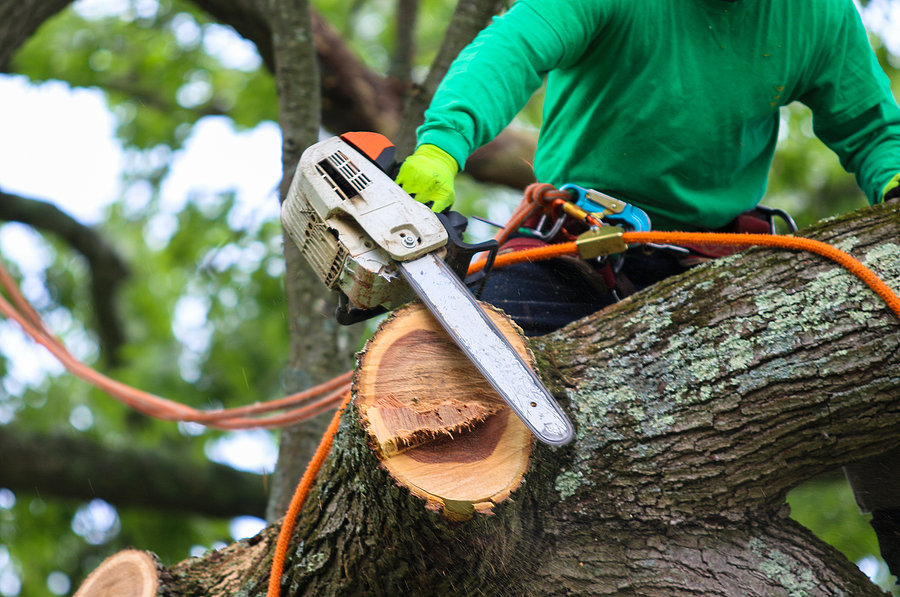Trees enhance landscapes, provide shade, and contribute to environmental health. But not every tree can withstand the test of time. Structural weaknesses, disease, and environmental factors can turn a once-healthy tree into a hazard. Ignoring the warning signs of a dangerous tree can lead to property damage, personal injury, or even loss of life. Homeowners and property managers should stay vigilant and recognize when professional intervention is necessary. When removal becomes the best option, seeking expert tree removal Chelmsford services ensures a safe and efficient process while preserving the integrity of the surrounding environment.
Leaning Trees
While some trees naturally grow at an angle, a sudden or worsening lean could signal structural instability. When a tree shifts its position unexpectedly, it may indicate issues with its root system or internal decay.
- Sudden Leaning: If a tree starts leaning overnight or after a storm, it likely suffers root damage or a weakened trunk. Immediate professional assessment is crucial to determine if the tree can be saved or if removal is necessary.
- The angle of the Lean: A tree leaning at more than 15 degrees from vertical is often at risk of falling and should be evaluated for removal. The greater the angle, the more likely it is that the tree has suffered internal weakening or root displacement.
- Soil Disturbance: Uprooted or cracked soil around the base suggests a shifting root system, which weakens stability. When roots are compromised, the tree may lose its ability to stand upright, making it highly dangerous during storms or high winds.
Dead or Dying Branches
Large, dead limbs indicate that a tree is in decline, posing a significant safety hazard. These branches can fall unpredictably, potentially causing injuries or property damage.
- Excessive Deadwood: A tree with multiple large, lifeless branches is struggling to sustain itself. Deadwood can easily break off and fall, especially during adverse weather, increasing the risk of damage to nearby structures and individuals.
- Lack of New Growth: If a tree fails to produce new leaves or buds in spring, it may be in a state of irreversible decline. A tree without fresh foliage is no longer capable of sustaining itself, signaling a severe problem with its internal health.
- Brittle or Cracking Wood: Trees with dry, cracking branches are more susceptible to breakage. When a tree loses flexibility in its limbs, it becomes fragile and more likely to snap under pressure from wind or snow.
Hollow or Decayed Trunks
A tree with internal decay may still appear strong from the outside, but it could be structurally unsound. Hollow trunks weaken a tree’s ability to withstand external pressures like wind and heavy rain.
- Visible Cavities: Large hollow areas or missing bark often indicate internal decay. These voids can significantly reduce the tree’s strength, making it more likely to break apart under stress.
- Fungal Growth: Mushrooms or fungal conks at the base of a tree suggest extensive internal rot. Fungi thrive on decaying wood, signaling that the tree’s internal structure is deteriorating from the inside out.
- Thinning Canopy: A declining upper canopy paired with trunk decay signals a tree struggling to sustain itself. As internal decay progresses, the tree’s ability to transport nutrients diminishes, leading to branch dieback and overall weakness.
Root Damage
A tree’s root system provides vital stability. When roots sustain damage, the entire structure becomes compromised.
- Exposed Roots: Erosion, construction work, or severe storms can leave roots vulnerable. Severely exposed roots reduce the tree’s ability to anchor itself, making it more likely to fall during heavy winds or rain.
- Mushroom Growth Near Roots: The presence of fungi near the base may signal decay in the underground root system. Fungal growth often indicates that the roots are rotting, which weakens the tree from below the surface.
- Leaning Due to Root Loss: Trees with damaged roots often begin to lean, an early warning of potential collapse. When roots are severely compromised, even mild weather conditions can cause the tree to topple over unexpectedly.
Pest Infestation
Insects and fungi are natural components of an ecosystem, but excessive infestations can indicate a dying or weakened tree.
- Termite or Carpenter Ant Presence: These insects burrow into wood, compromising structural integrity. Once inside, they eat away at the tree’s core, causing significant damage over time.
- Bark Peeling or Holes: Extensive insect damage can result in flaking bark or numerous exit holes. A tree with peeling bark or boreholes is likely suffering from a severe infestation that weakens its structure.
- Fungal Infections: If fungi spread across a tree’s trunk or limbs, it suggests severe decay. Fungal infections often develop alongside insect infestations, accelerating the tree’s decline and increasing the risk of failure.
Tree Location Risks
Even a healthy tree can pose risks depending on its proximity to structures or utility lines.
- Near Homes or Buildings: Trees growing too close to structures can damage roofs, gutters, and foundations, particularly during storms. Falling limbs can puncture roofs, break windows, and even cause structural damage to walls.
- Overhanging Power Lines: Branches touching or growing too close to power lines pose fire hazards and electrical risks. In severe cases, fallen limbs can bring down power lines, creating dangerous outages and fire hazards.
- Close to Driveways or Roads: Trees near roads may obstruct visibility or cause damage if they drop limbs onto passing vehicles. Large roots growing under driveways can also cause pavement upheaval, leading to costly repairs.
Conclusion
Trees enhance properties, but when they become unsafe, prompt action is necessary. Leaning trunks, dead branches, internal decay, root damage, pest infestations, and poor placement all contribute to potential risks. Recognizing the early warning signs helps prevent accidents, injuries, and costly property damage. Seeking professional assistance ensures safe removal while minimizing environmental impact. For property owners needing expert assessment and removal services, contacting a reputable Bedford tree service guarantees professional solutions to maintain both safety and landscape aesthetics.






